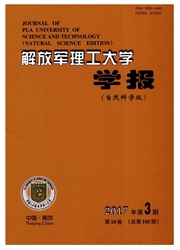

 中文摘要:
中文摘要:
为了研究南海海面风与海面温度的相互关系,利用相关分析、经验正交函数分解、奇异值分解等方法对49a的COADS资料的南海海域的海表面温度异常(SSTA)和海表面风异常(SSWA)进行分析。SSTA的EOF1解释了总方差的50.8%,该模态与整个南海SSTA同步变化,时间系数主周期为2~3a,该系数滞后5个月,与Nin03.4指数的相关系数达到0.423;SSWA的EOF1解释了总方差的25.1%,与整个南海SSWA同向变化,时间系数的主要周期为4~8a,但与Nin03.4指数的同步相关系数只有0.04,SSTA和SSWA的SVD分析结果第一模态的方差贡献为86.7%,空间分布很好地体现了SSTA和SSWA之间的正反馈机制,左右奇异向量时间系数达到0.5,且时间系数的主要周期都为4~8a,证实了南海海域海-气耦合的主模态为ENSO模态。
 英文摘要:
英文摘要:
To study the relationship between sea surface wind and sea surface temperature in the South China Sea(SCS), correlation analysis,empirical orthogonal function analysis (EOF) and singular value decomposition method (SVD) were used to analyze the sea surface temperature anomaly (SSTA)field and sea surface wind anomaly (SSWA) field from comprehensive ocean-atmosphere data set (COADS) data. EOF1 of SSTA explains 50.8 % of the total variance, and the spatial patterns of the EOF1 mode of SSTA present the same phase distribution, and 5 months lag behind the coefficient of the time series and the correlation coefficient reaches 0. 423 to Nino 3.4. EOF1 of SSWA explains 25.1% of the total variance and presents in the same direclion across SSWA of the South China Sea. SSWA time coefficient maior cycle is 4-8 years, but the correlation coefficient with Nino3.4 index is not high. The first mode variance contribution of the SSTA and SSWA SVD analysis results is 86.7%, and the spatial distribution reflects the positive feedback mechanism between the SSTA and SSWA. The left and right singular vectors time coefficient is 0.5, and major cycle of the time coefficient is 4 to 8 years. These results confirm the main modes of coupled ocean-atmosphere of the South China Sea are the EI Nino-Southem Oscillation mode.
 同期刊论文项目
同期刊论文项目
 同项目期刊论文
同项目期刊论文
 期刊信息
期刊信息
